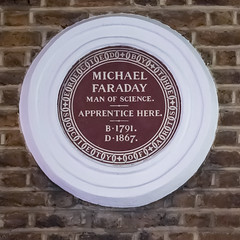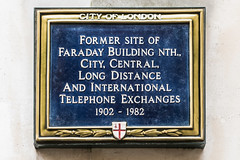Michael Faraday
Commemorated on 5 plaques
Michael Faraday man of science. Apprentice here. B. 1791 D. 1867
48 Blandford Street, Westminster, W1, London, United Kingdom where they served an apprenticeship
Michael Faraday lived here 1858-1867
37 Hampton Court Road, London, United Kingdom where they lived (1858-1867)
In the summer of 1831 Michael Faraday 1791-1867 stayed at 3 Prior's Cottages on this site. Later that year he announced his discovery of electromagnetic induction to the Royal Society London
Pelham Street, Hastings, United Kingdom where they stayed
Michael Faraday 1791–1867 scientific genius and discoverer of electromagnetism
Larcom House, 9 Larcom Street, Walworth, London, United Kingdom where they was
Former site of Faraday Building Nth., City, Central, Long Distance and International telephone exchanges 1902 - 1982
Addle Hill, London, United Kingdom where they was




.jpg?width=250)

